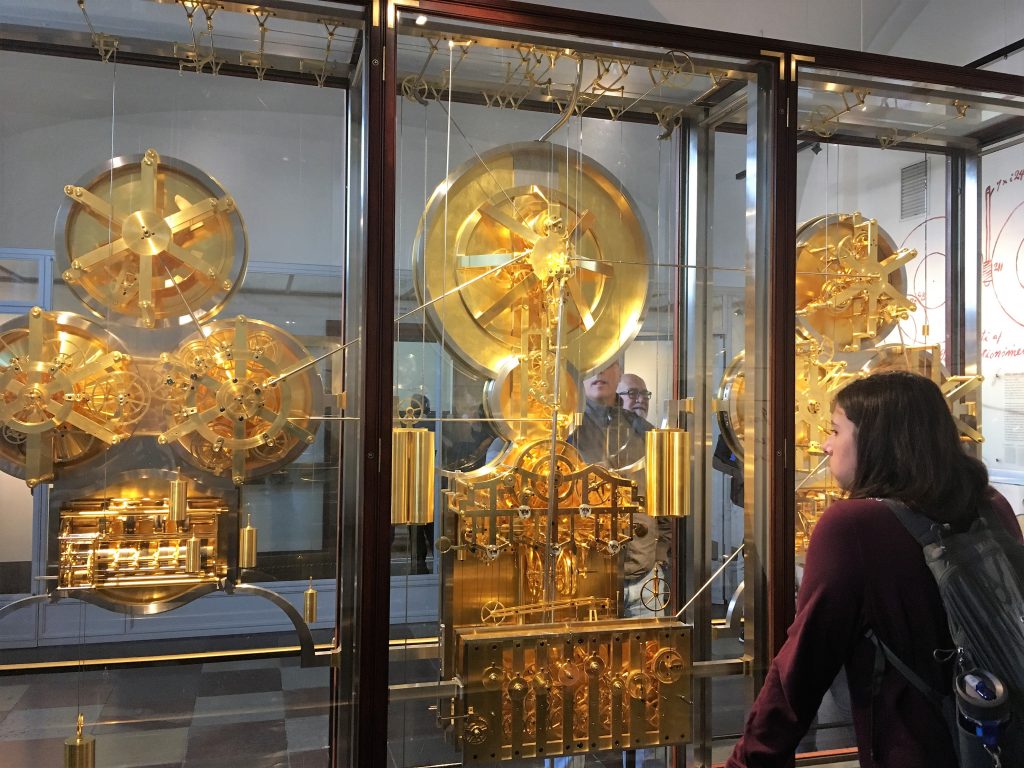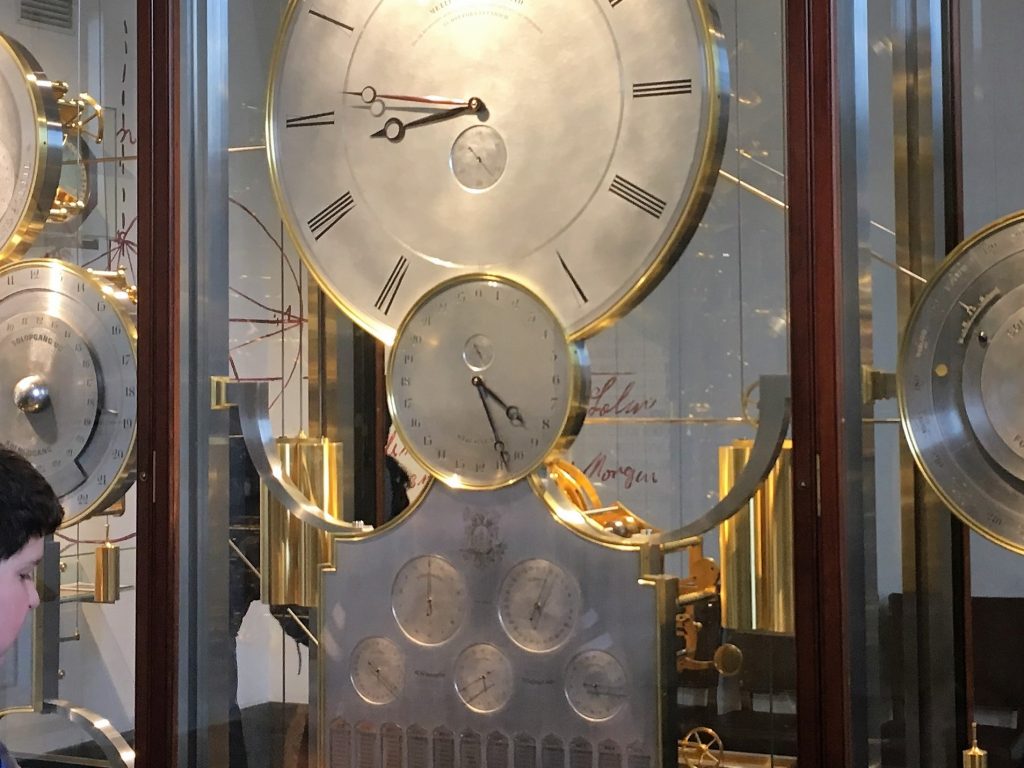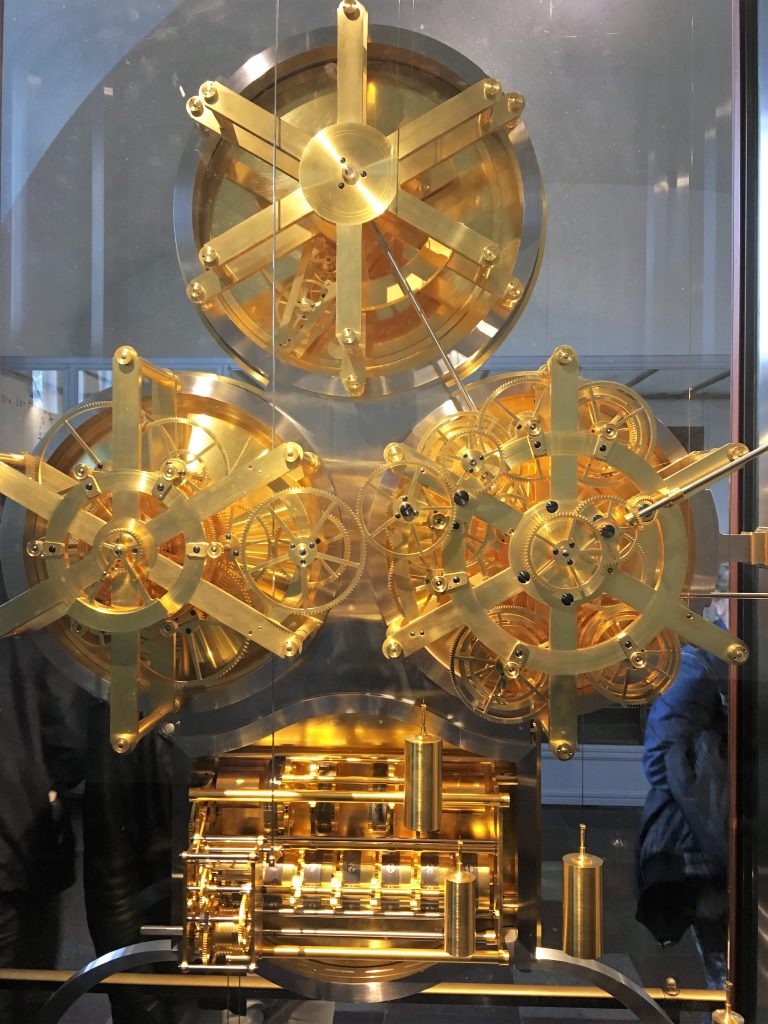
In the town hall of Copenhagen sits the astronomical clock of Jens Olsen. This clock is the most accurate non-sub-atomic clock in the world.
It was designed by Jens Olsen and took a total of 50 years to finish the calculations on the eleven components. It took a period of twelve years to construct and put together all 15,448 pieces of the clock. During the construction, Jens fell ill and passed away in 1945 and never saw his creation finished. In 1955 the clock was completed and was started by King Frederik IX and Jens’ granddaughter Brigit Olsen.
The clock has a stainless steel frame and very detailed engravings on it. There was a contest held to decide who would design the exterior of the machinery and the man who won was architect Gunnar Biilmann Peterse. Gunnar’s design won because of it’s stylish yet mechanical feel. The final product is covered in a coat of rhodium because it is acid resistant, harder and more durable than platinum. The back of the clock is completely covered in gold.


Left section:
The dial on top shows time equation (the difference from local time and solar time), local time in Copenhagen, and solar time. The dial on the left shows time anywhere in the world (a 24-hour clock). The dial on the right shows sunrise and sunset according to local and solar time. On the bottom is the Gregorian calendar (our calendar) which shows year, month, day, and day of the week.

Middle section:
The top dial Shows 12 hour time 15 degrees east of Greenwich (central European time) in hours, minutes, and seconds. The center consists of five dials:
The Sunday letter (calculates the day of the week on specific dates), the epact (used in determining the date of Easter), the sun circle, the indiction (15-year cycle used to date medieval documents), and the moon circle. At the bottom is a calendar that calculates every phase of the moon and Easter Sunday.

Right section:
The top dial shows the current map of the stars over Denmark. The left dial shows the geocentric orbit with the Earth as it’s center. The right dial has the orbits of the planets around the sun so you’ll know when to access the demon realm when the planets align. The bottom dial shows the days and years on the Julian calendar.
Of all these gears and parts, the slowest one will take a total of 25,753 YEARS just to rotate once. The fastest gear will take a mere 10 seconds to rotate.

If you are ever in Denmark, you should visit the Jens Olsen astronomical clock because it is interesting to figure out how each piece fits together.
